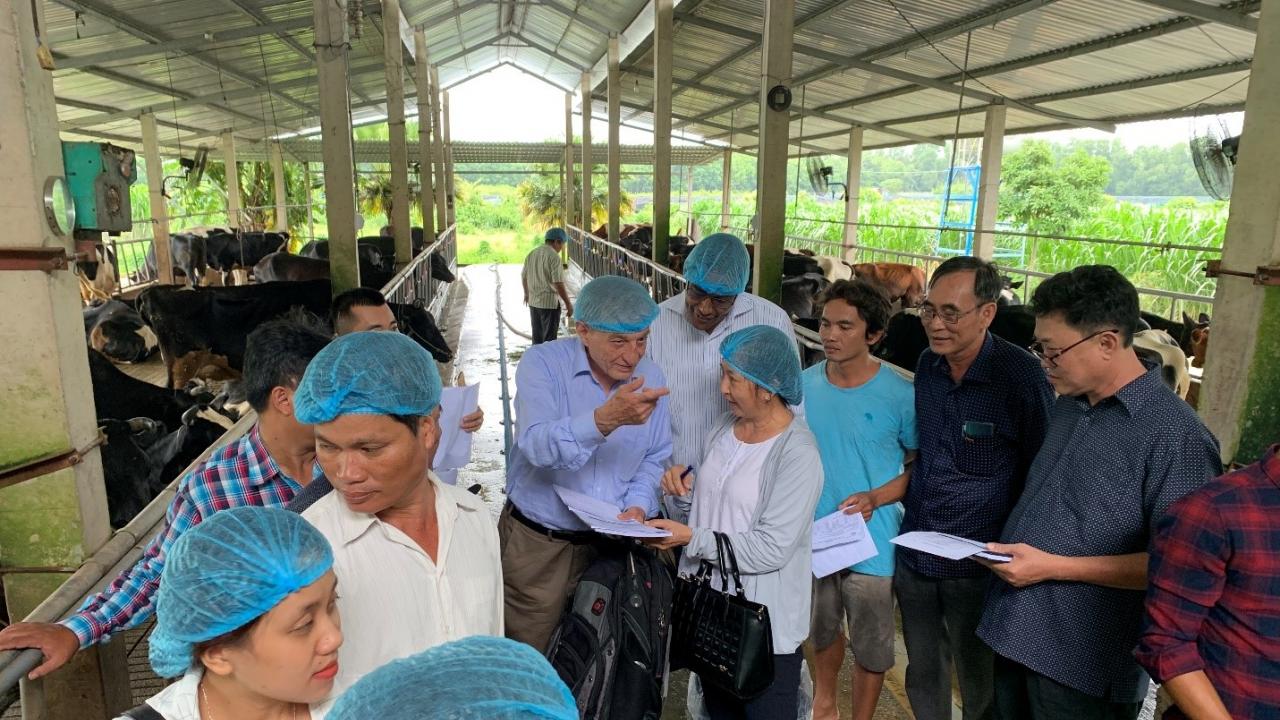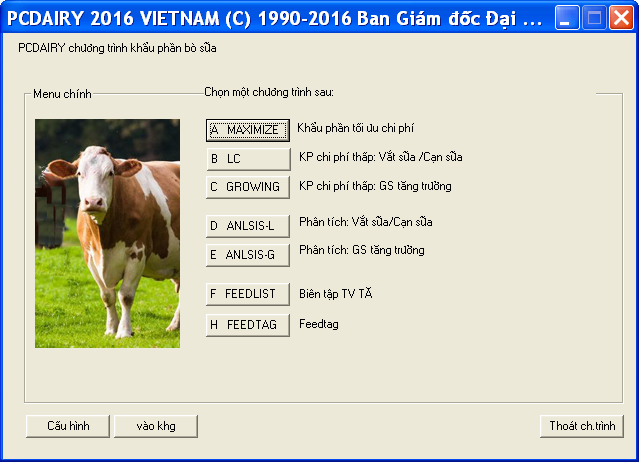
Ration Formulation Software Helps Farmers be More Productive, Reduce their Emission Intensity and Train Nutritionists
Dairy production is developing in Vietnam. The total population of dairy cows is dramatically growing from about 100,000 heads in 2008 to almost 300,000 heads in 2016. In parallel, milk production increased from about 250,000 tones in 2008 to about 800,000 tones in 2016. However, the current milk production in Vietnam only contributes 34% of the total domestic demand and the remainder of the demand is fed with imported dairy products from USA, Europe, New Zealand, and other countries Thus, dairy production in Vietnam has a potential to develop further to meet the demand.
Feed cost contributes 70% of the total cost of animal production and one of the biggest limitation to optimum productivity is knowledge of meeting the cow’s nutrition requirement with available feed. This is especially true in small holder farming practices which make up about 60% of dairy operators in Vietnam. In addition less than optimum production results in greater greenhouse gas emission intensity (emission per liter of milk). Therefore, ration formulation using appropriate feeds increases economic efficiency and reduce methane emission intensity from dairy cows. Therefore, reducing the cost of feed will increase the economic efficiency in livestock production.
Through the Enhancing Capacity for Low Emission Development Strategy program managed by the USDA Foreign Agricultural Service (FAS), a software was developed that integrated over 1,000 different local feeds and by-products with nutrient requirement for dairy cattle. The software was made available in Vietnamese with easy to use graphical user interface (See figure). The feed library was updated through a collaboration with Vietnam National University of Agriculture (VNUA), where some of the nutritional analysis was conducted.

Hundreds of extension agents received hands-on training in collaboration with the National Agricultural Extension Center and Department of Livestock production of the Vietnam Ministry of Agriculture and Rural Development. The training was assisted by a local scientist that was partially trained through another USDA FAS program (Borlaug Fellowship). In addition, under an Australian Centre for International Agricultural Research project implemented by University of Queensland 43 dairy producers/technicians in Moc Chau (12), Ha Nam (6), Ho Chi Minh City (16), Lam Dong (3), and Hanoi (6) have been trained.
The sustainability of the program is assured through integration of the software into the curriculum of undergraduate students at VNUA. There are now two courses (animal feeds and feeding, and ruminant production), with 7 faculty members involved that uses the software. To date, close to 4,000 students over 3 years have been trained with female students making up 60% of the trainees.
In the Nationally Determined Contribution plan, Vietnam committed to reduce 8% of its greenhouse gas emission by 2030 relative to the business as usual levels with livestock feeding listed as part of the solution. Through the use of the software, young scientists are learning about practical ruminant nutrition, and extension agents continue to be trained. This will result in greater productivity of the dairy system and reduce environmental footprint helping the country achieve its ambitious goals of slashing greenhouse gas emissions.
